Rift visit, part 2 (Rachel’s story)

Home
Home determines so much of who we are, of the people we become.
Some mornings I watch the dawn’s slow light bleed across the valley, its wash of gold brightening the thorn trees, the houses, the spotted goats below. I wonder who I’d be if I had been born into a home here, waking beneath a low sweep of thatch or corrugated tin. What would I hope for? How would the cadence of my days drum out?
Last year we visited a pair of students in their homes — Olivia and Rachel (their names changed to preserve privacy) have come through our KKC program and are now completing higher-level studies. Their families live deep in the interior of Kenya’s Rift Valley.
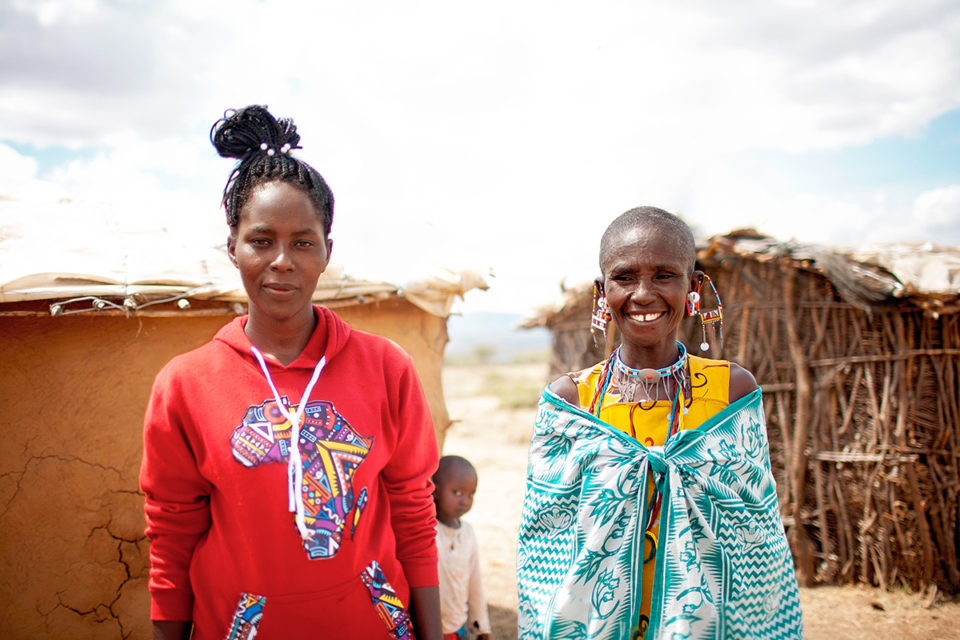
Rachel’s homestead
On the day of our visit, we follow a path cut into the dry terrain and arrive at Rachel’s house to greet her siblings and neighbors. We’re especially glad to see Rachel’s mom again. She works as a cook for our KKC lunch program at Oiti Primary, the nearest school. Every morning just past sunrise, she makes the brief walk to the school to light firewood and stir giant sufuria pots of githeri. I imagine that Oiti’s students are perpetually happy to see her; not only is Rachel’s mom kind and efficient, but she’s also an outstanding cook.
Rachel gives us a quick tour of her family’s homestead, starting with a kitchen in progress. Eventually the walls will be mudded over, but for now its frame is a lattice of sturdy sticks interwoven with thin, woody vines. Next to the kitchen is a manyatta with a small entry room leading to a bedroom. Two baby goats are curled up on the floor near the door, perhaps seeking respite from the swelling heat outside.
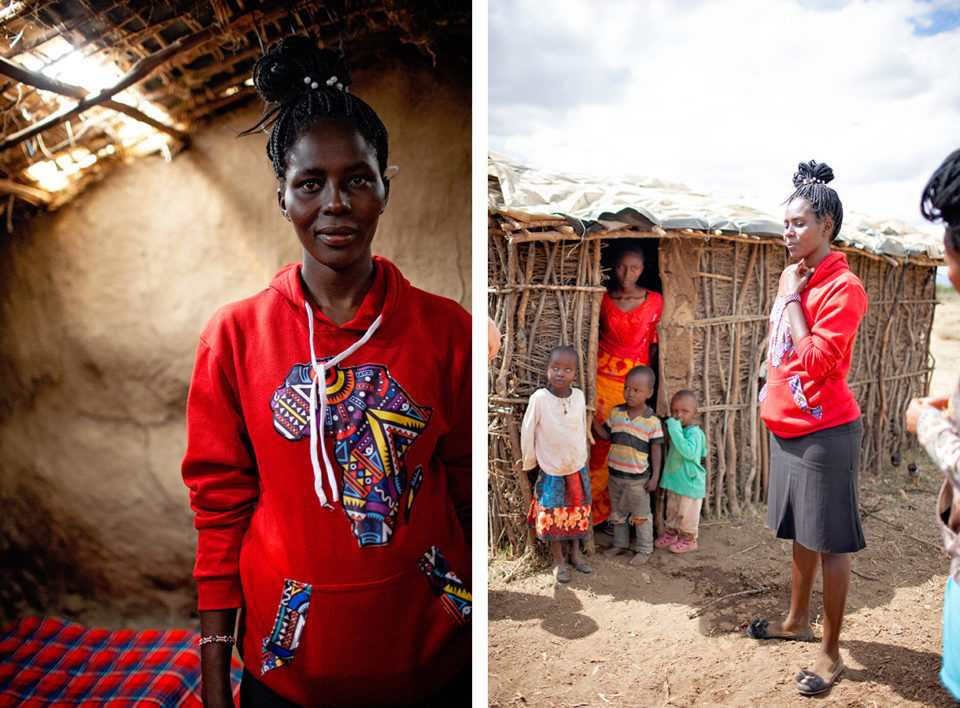
In the second room, we girls sit on the pair of beds as Rachel updates us on her progress in technical college, where she’s studying to become a secretary. Her courses cover subjects like commerce, typing, computers, and communications. On the weekends she spends her time studying, of course, but also goes to church and hangs out in the dorm with her friends.
Midway through the conversation Rachel’s mother steps through the doorway with a thermos of drinking chocolate – freshly boiled water mixed with cocoa powder and sugar. We each receive a piping cup, and after watching me blow on mine at length, Olivia pops up and rescues me. She pours the liquid back and forth between two cups until it’s cool enough to drink.
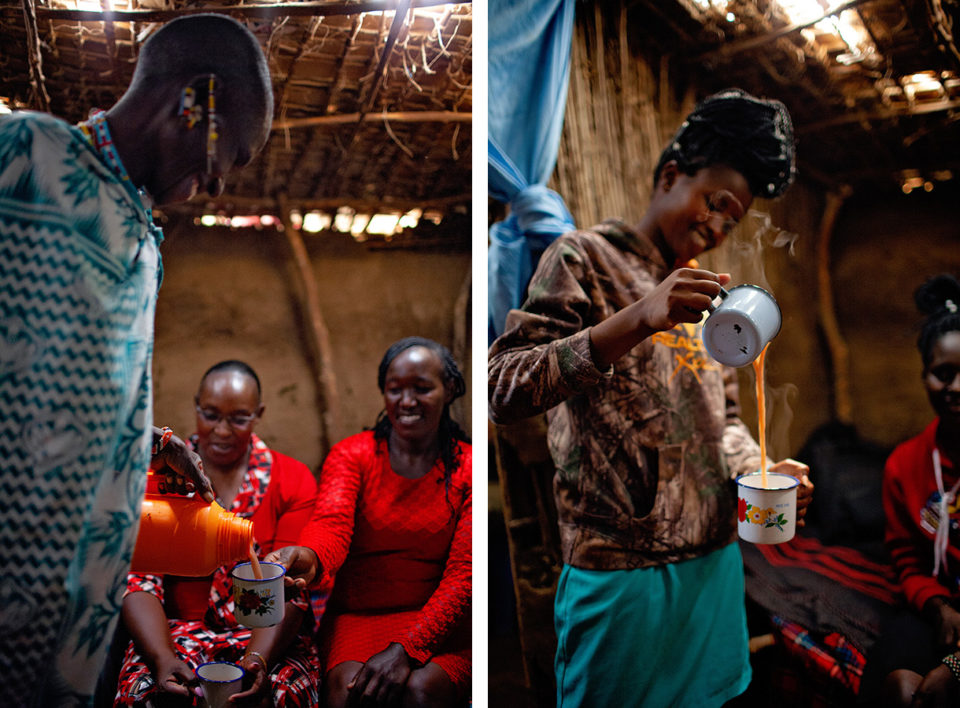
It is not lost on us that drinking chocolate is a luxury in this community. This region of the Great Rift Valley is a meandering, semi-arid swath of fissures and thorned brush rimmed by escarpments. Rain is scarce, and children fill sun-yellow barrels with water from a community borehole to roll toward home.
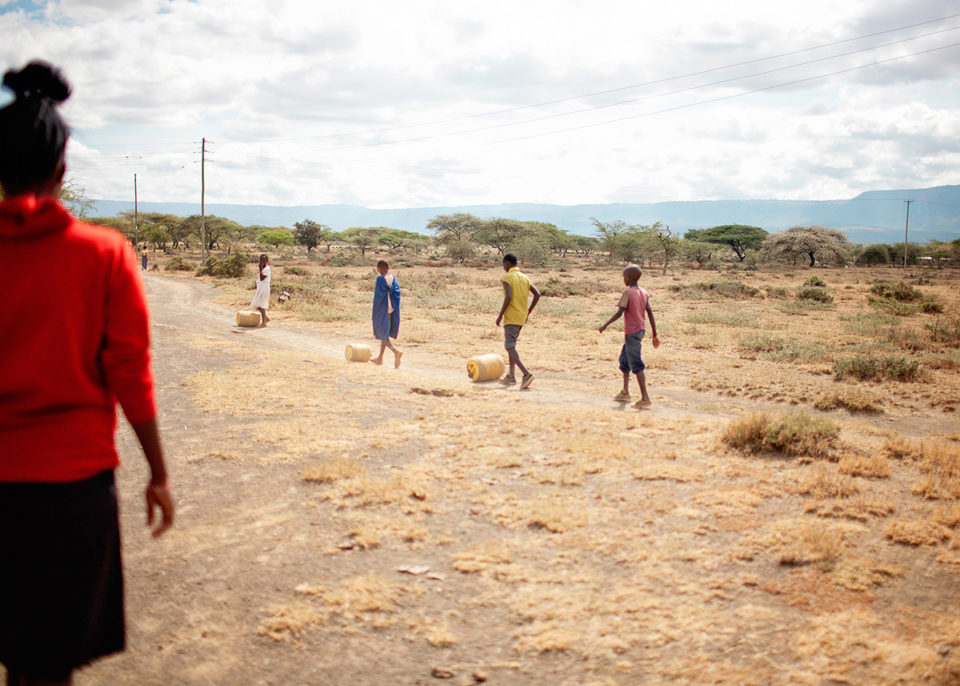
An unexpected highlight
Rachel sits between Lucy, her mentor and friend, and Sila, one of our exceptional KKC computer teachers. Sila grew up in a Maasai home like this one, and hearing her story is an unexpected highlight of our visit.
“It started with my grandparents,” Sila tells us. “They knew that education is important, and so my parents also understood that education is important.” Sila’s father passed away while she was still in primary school, but her mother worked hard to ensure that Sila and her siblings finished school. Today all five of them are employed in steady jobs they love.
“This is the difference education makes. It becomes a cycle.” Sila explains how she and her siblings are carrying on this cycle, making sure that their own children attend school from pre-primary through university.
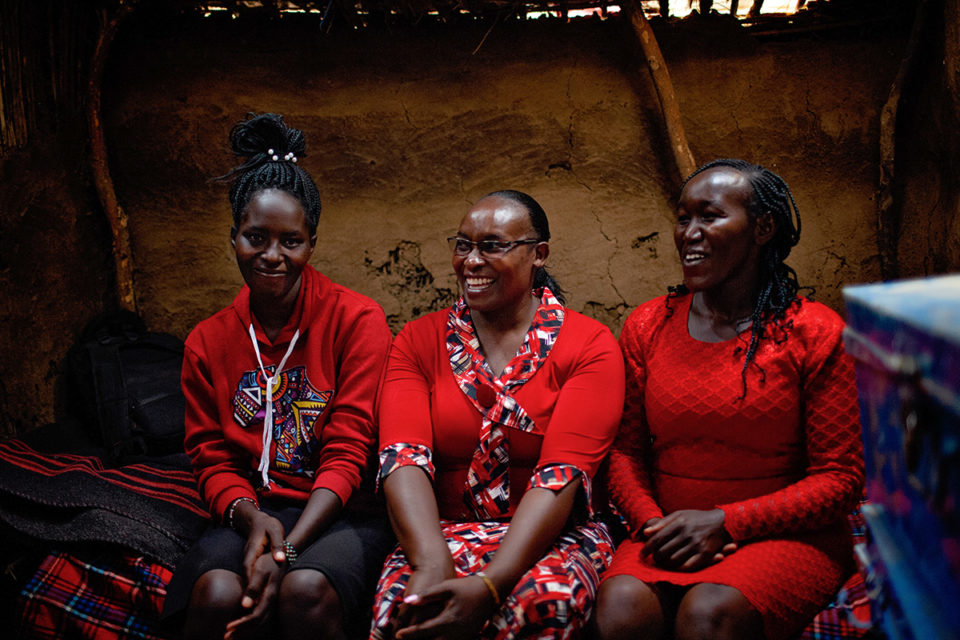
Education is especially vital for girls. “When girls are educated and wait to marry,” Sila tells us, “they have more choice in whom they marry and what sort of work they want to pursue.” I think she says this mostly for Rachel and Olivia to hear, but it strikes a chord of steely determination in me as well: to continue drawing our students to school with the kept promise of daily lunch and computer education. To continue pausing in wonder as we watch them crack open futures rimmed with choices, dignity, stability, and hope.
Feasting together
As we prepare to leave, Rachel’s family surprises us with an invitation to stay for lunch. It turns out her mom spent a good chunk of the morning preparing a lavish spread of chapati, ndengu, and salted cabbage. It’s delicious and easily ranks among my top meals in memory. Mark asks the girls when they typically have dishes like these – maybe for Christmas or another special holiday? They blink back at him, silent, and we understand. They never have a meal this extravagant.
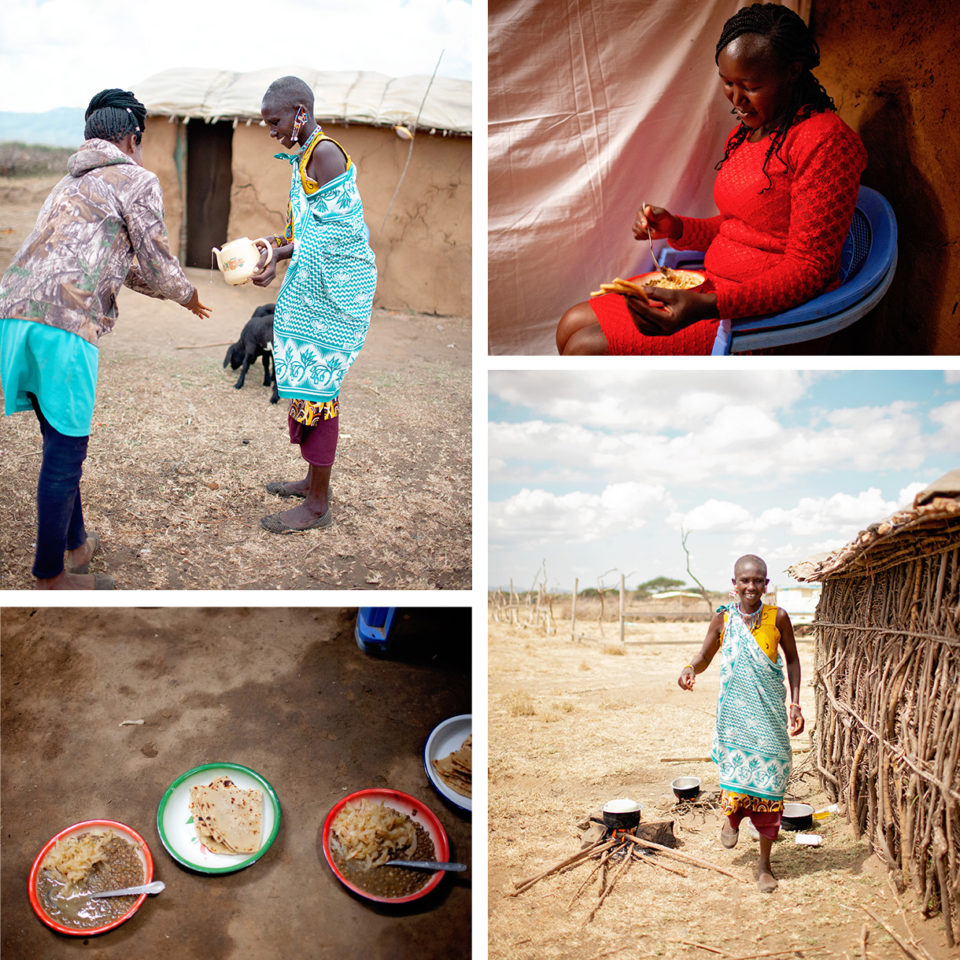
We linger after lunch, expressing our gratitude as best as we can. Before we leave, Rachel places an exquisitely beaded necklace around Lucy’s neck. It’s a gesture of honor and thankfulness for Lucy’s years-long investment in her as a student and a young woman.
I don’t know who I’d be if I had grown up in this home, but looking at Rachel and her mom, I could make a fair guess: someone bright, industrious, resourceful, deeply generous.
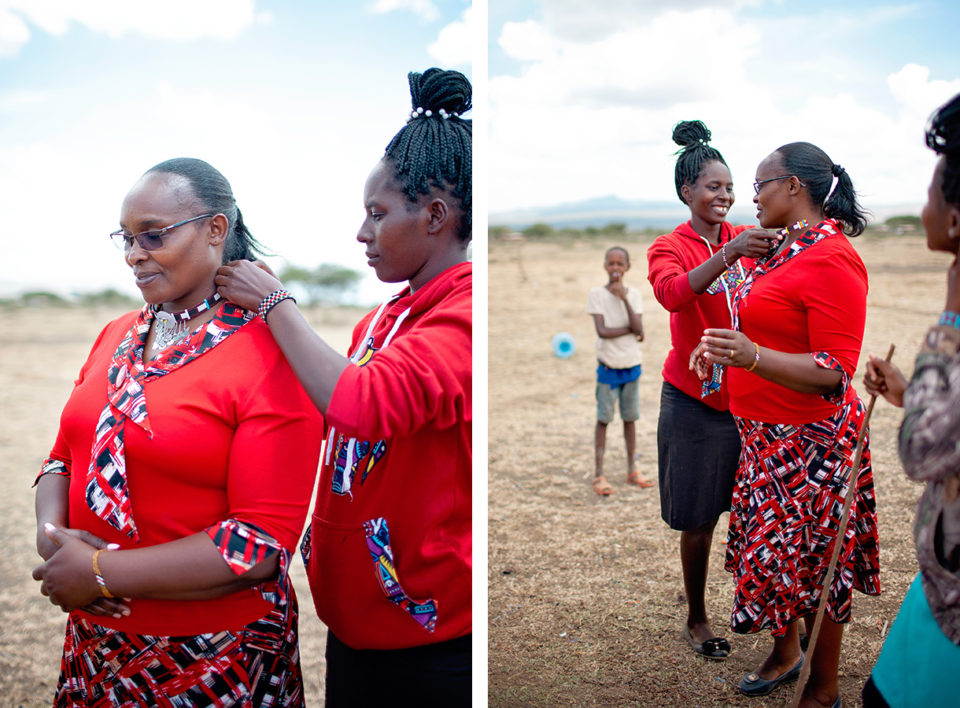
As we head back to the car, Lucy is deep in conversation with Rachel and one of her sisters, who has recently finished eighth grade. Together they’re scheming up ways to make it possible for Rachel’s sister to attend secondary school as well.
Sila glances my way, her smile radiant. And the cycle of hope continues.
—
Read Part 1 (Olivia’s story) here.
